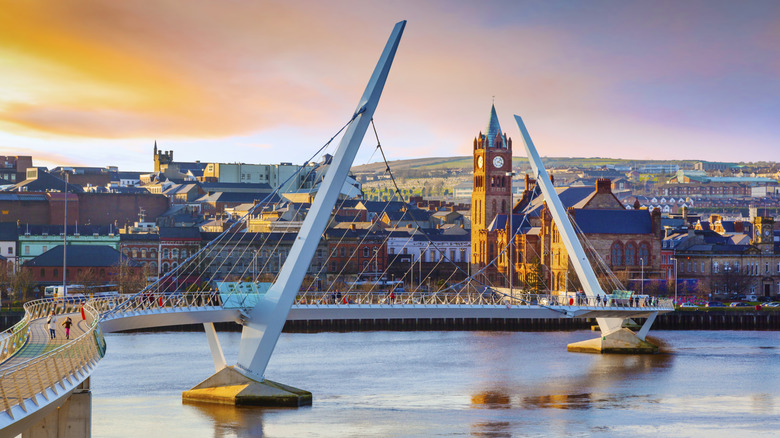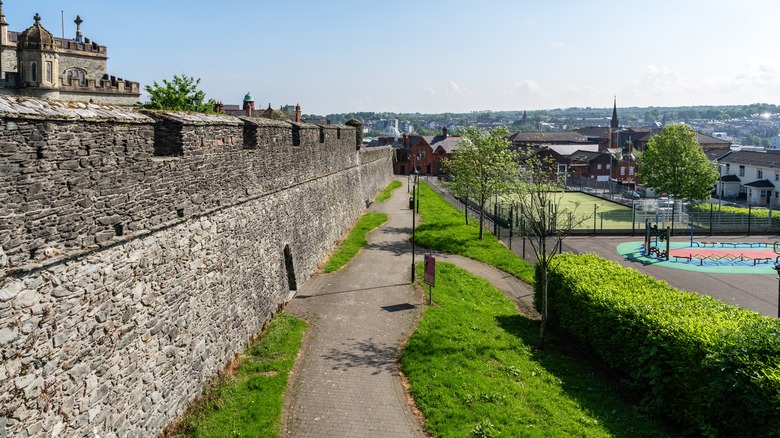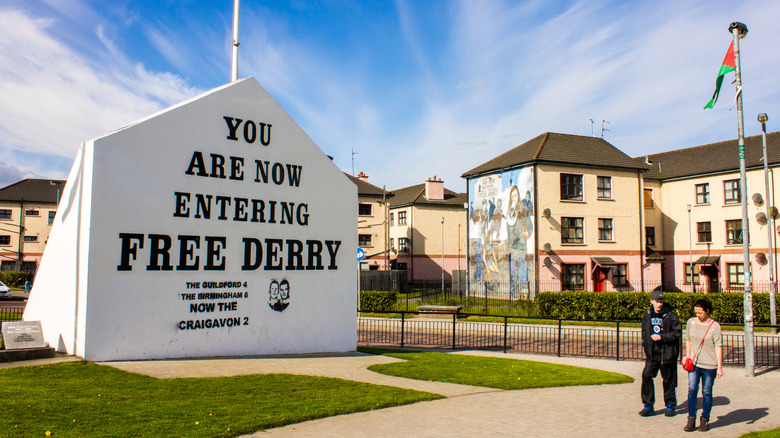Ireland is a land of untamed natural beauty, with rugged cliffs, verdant countryside, fjords, pristine rivers and lakes, heather-covered moors, and forlorn, windswept islands, like this remote rise off the southern coast that is a must-visit for “Star Wars” fans. The Emerald Isle is also home to charming cities, and while Dublin — a great destination for solo travelers — may dominate the conversation, it pays to venture out of the capital to get a real taste of the country’s other settlements.
This includes heading up out of the Republic to Northern Ireland, which — despite being politically part of the U.K. — shares deep cultural ties with its sister to the south. While you should not skip the North’s capital, Belfast, you should also make time to visit the charming town of Derry, the second-largest city in Ulster (the nine counties that make up Northern Ireland).
Officially labeled Londonderry on maps, Derry — as most locals refer to it — has a fascinating, if tumultuous history. The surprisingly compact city sits on both sides of the River Foyle, and despite the laid-back vibes you’ll find today, its past is one of deadly struggle and conflict. This is evidenced by the nearly 20-foot wall that still surrounds the interior of the town, affectionately referred to as the “necklace,” a spot that European travel guru Rick Steves says is a “good place to start a Derry visit.”
A defensive installation that stands to this day
Derry is the only completely walled city remaining in Ireland, and its stone fortifications were built between 1613 and 1618 to protect Scottish and English settlers who had begun arriving in Northern Ireland. In 1689, the recently-deposed Catholic King James II attacked the city, but its Protestant defenders closed the gates and endured 105 days of siege, emerging victorious in the end.
The Derry Walls held and still stand today as a testament to their sound construction and strength. A stroll around the nearly one-mile perimeter is a way good to soak up the place’s rich history — which includes getting an up-close-and-personal look at “Roaring Meg,” the legendary cannon that helped repel the relentless attack by James and his army.
According to Steves, a trip to the Walls of Derry also gives visitors a chance to get a glimpse of Bogside, the working-class Catholic neighborhood that played such a major part in the Troubles — the conflict between nationalist Catholics and loyalist Protestants that went on in Northern Ireland from 1968 to 1998. Bogside was a major area of resistance and tragedy, including the Bloody Sunday massacre in 1972, where 13 protestors were shot dead by British troops.




